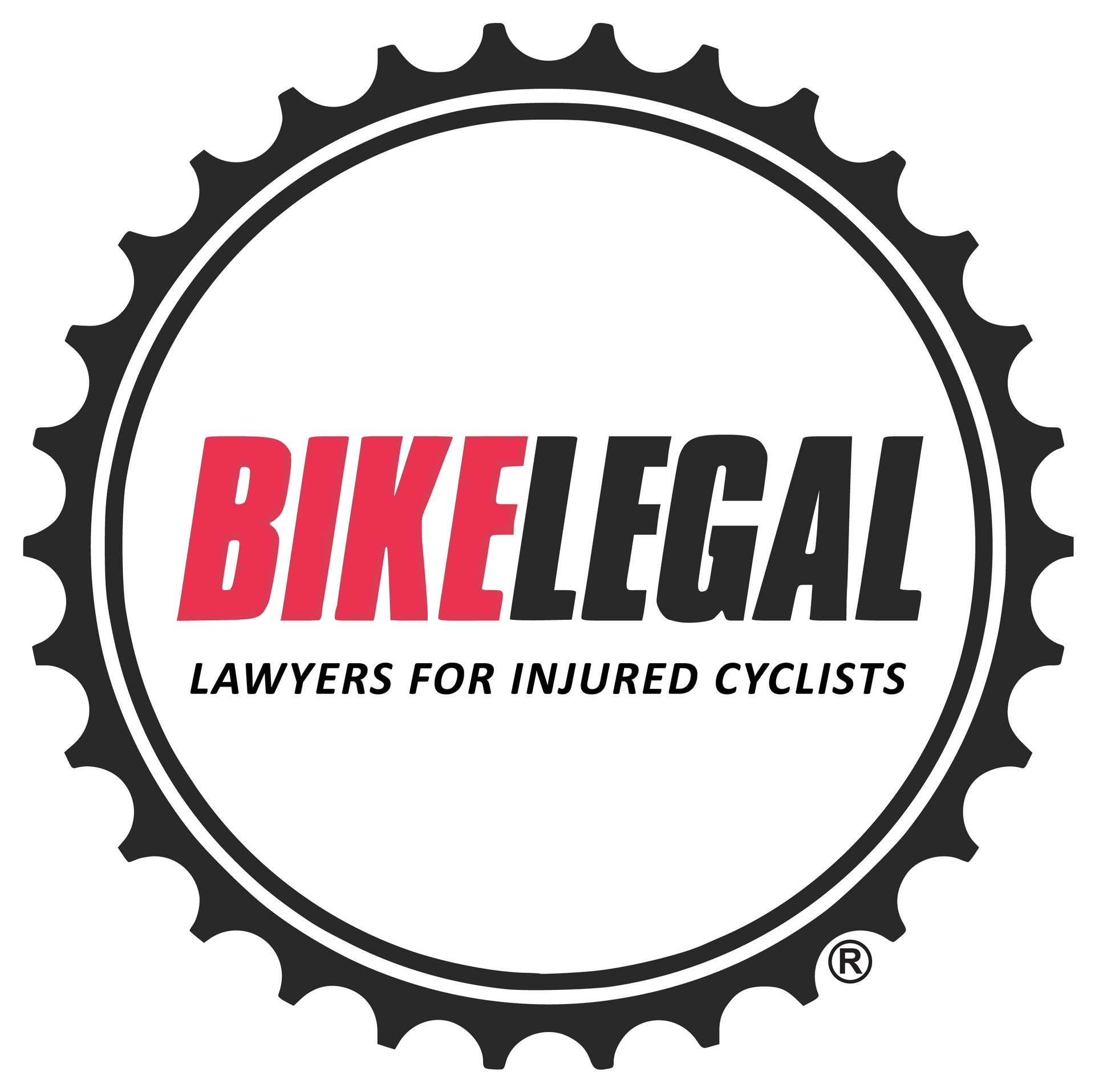Everything You Need to Know About E-bikes (Electric Bicycles)
Follow us on
social media!
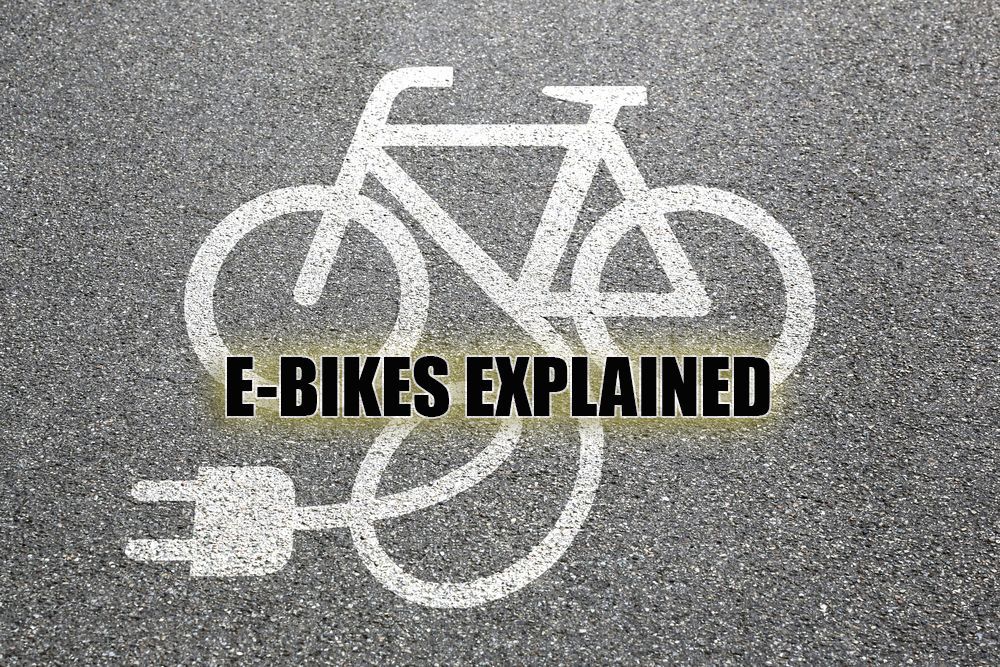
Electric bikes, or e-bikes, are revolutionizing the way we ride bicycles by blending traditional cycling with innovative electric power. Whether you're zipping through city streets or climbing mountain trails, e-bikes offer a versatile and efficient way to travel. This article addresses common questions covering everything from how e-bikes work and their classifications to the latest laws and regulations. We’ll also explore various types, provide safety tips, and discuss legal considerations, giving you all the insights you need to fully understand the booming world of electric bicycles.
How E-Bikes Work: Dive into the mechanics of e-bikes, including motor types and how they assist pedaling.
Types of E-Bikes: Explore the different models, from urban cruisers to mountain e-bikes.
Legal Framework: Understand the laws and regulations affecting e-bike usage in various regions.
Safety Tips: Get practical advice to keep your rides safe and enjoyable.
Maintenance and Care: Tips on how to keep your e-bike in top condition.
E-Bike Advantages and Disadvantages: Discuss the pros and cons of the e-bikes boom in the United States
Future Trends: Look at what's next for e-bikes in technology and market trends.
What is an E-bike (Electric Bicycle)?

An e-bike, or electric bike, is more than just a bike - it supercharges your pedal power with an electric motor. There are two main types of electric bike motors: pedal-assist, which amplifies your pedaling effort, and throttle-based, which can propel you forward without any pedaling at all.
These innovative bikes make cycling accessible to a wider audience, allowing you to enjoy a ride without wearing out too quickly. Curious about the different types? Keep reading as we dive deeper into how these electric bikes work and which e-bike might be perfect for you.
Historical Perspective: Why Were Electric Bikes Developed?

E-bikes consist of several key components: a motor, a battery, and a controller, all integrated into a bike frame that resembles a regular conventional bicycle. E-bikes were designed to make cycling less daunting and more appealing to a broader audience. The first prototypes appeared in the late 19th century, but modern e-bikes began to take shape in the 1990s as battery technology improved.
E-bike Boom in the US: When and Why
The e-bike craze started in the early 2000s and has been gaining steam lately. Why? Well, cities were getting crowded, folks were getting greener, and e-bikes got cheaper and better. Then, COVID-19 hit, and everyone wanted a safe, socially distant way to travel, and e-bikes fit the bill perfectly.
How is an E-bike different from Regular (Analog) Bicycles, Scooters, Mopeds and Motorcycles
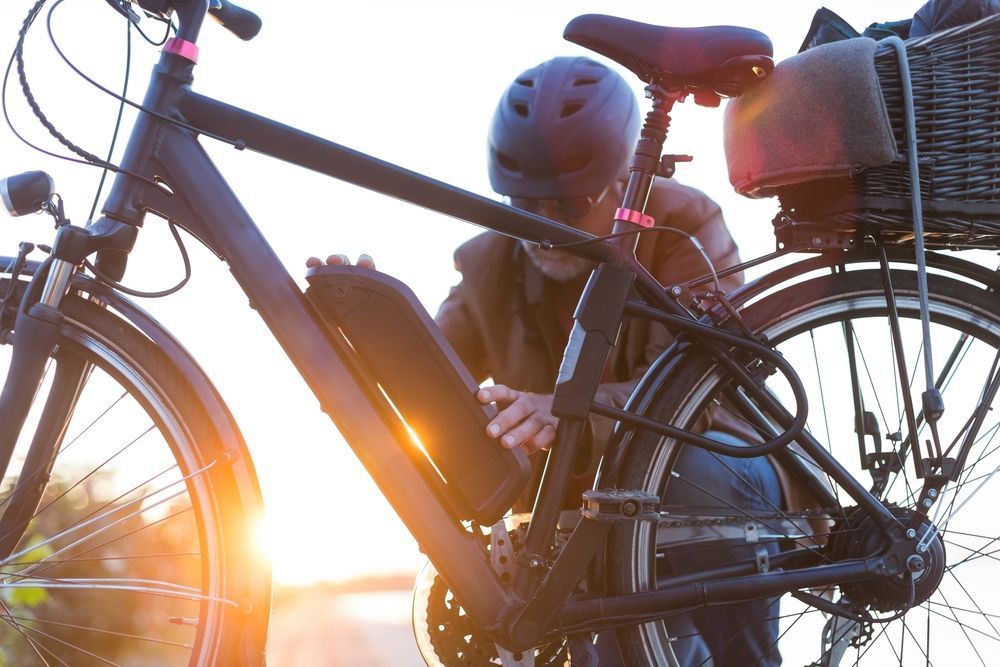
E-bikes represent a unique fusion of traditional cycling enhanced by electric power, setting them apart in versatility and user-friendliness. Here’s how they compare with other common modes of twho-wheeled transport:
Regular Bicycles: The classic bike is all muscle power—great for fitness but challenging over long distances or steep terrains. E-bikes step in with motor assistance that helps you pedal, making it easier to climb hills and travel farther without exhaustion.
Scooters: Typically smaller and motorized, scooters offer quick urban transit but lack the pedal component. E-bikes provide similar ease of mobility but with the added benefit of exercise and the option to switch off the motor and pedal manually, giving you a quieter, eco-friendly ride without the need for fuel.
Mopeds: Originally, mopeds featured pedals, with their name derived from a combination of "motor" and "pedal." Nowadays, mopeds lack pedals and are categorized based on engine size, speed, and power output. Typically, a moped has an engine up to 50cc and a maximum speed of approximately 28mph. Mopeds usually rely on gas and require licensing and registration. E-bikes keep it simpler and greener, using electric power and requiring no registration, making them a hassle-free option for pedal-assist riding up to certain speeds.
Motorcycles: Engine-powered and built for speed, motorcycles are a heavyweight option compared to e-bikes. While motorcycles handle long distances and high speeds with ease, e-bikes offer a gentler, more accessible form of motor-assisted cycling. Motorcycles ofgten require a special motorcycle class license in addition to a regular drivers license.
E-bikes not only bridge the gap between manual cycling and motorized transport but do so in a way that prioritizes accessibility, sustainability, and health benefits—making them a compelling choice for modern commuters and fitness enthusiasts alike.
E-Bike Classes and Categories
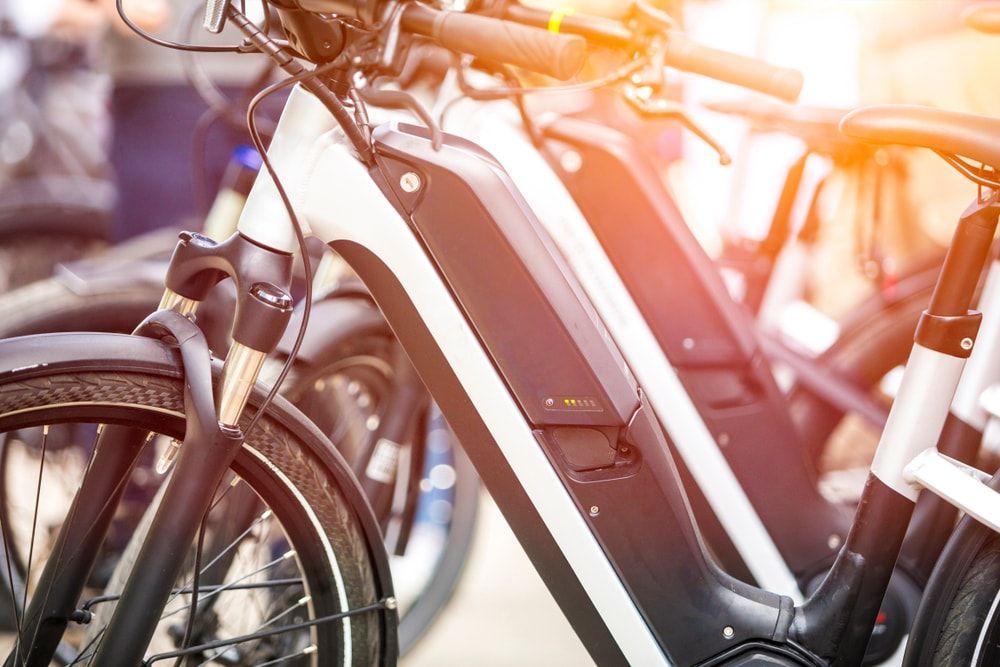
E-bikes are categorized into three main classes, each designed to cater to different riding needs and preferences. Here’s a quick overview of what each class offers:
Class 1: Basic Pedal Assist
Class 1 e-bikes provide pedal assist with a maximum speed of 20 MPH. This means that the e bike motor engages only when the rider is actively pedaling, enhancing the pedaling effort without completely taking over.
This class is ideal for those looking for a gentle boost to their natural pedaling efforts, making it easier to cover more ground without additional exertion.
Class 2: Throttle and Pedal Assist
Class 2 e-bikes feature both a throttle and pedal assist, capable of reaching speeds up to 20 MPH. The throttle allows the rider to engage the bike's motor without pedaling, offering flexibility for moments when you need a break from pedaling or when starting from a stop.
This class suits riders who appreciate the option to switch between pedaling and cruising effortlessly.
Class 3: Speed Pedal Assist
Class 3 e-bikes are designed for those who need speed, providing pedal assist up to 28 MPH.
These bikes are equipped to handle faster commutes and longer distances, making them a popular choice among more experienced riders or those commuting longer distances.
Pro tip: Some high-speed e-bikes marketed under Class 2 or 3, can sometimes exceed standard legal limits, transforming them into potentially hazardous powerhouses.
Pedal Assist and E-bike Variants
Pedal-assist technology on e-bikes automatically enhances your pedaling by using sensors to adjust the motor's output based on your effort. This feature is particularly helpful on challenging terrains and long rides, allowing for smoother and less tiring journeys.
Pedal Assist vs. Throttle E-bikes:
Pedal-Assist E-bikes: These activate the motor only while pedaling, offering a natural ride feel and better battery efficiency since the motor operates only when needed.
Throttle E-bikes: The motor can be engaged with a throttle at any time, allowing for pedal-free acceleration—useful for quick starts or climbing hills.
Both types provide distinct benefits, with pedal-assist enhancing cycling efforts and throttle e-bikes giving more control and convenience, similar to motor scooters.
Electric Bike Motors and Speed
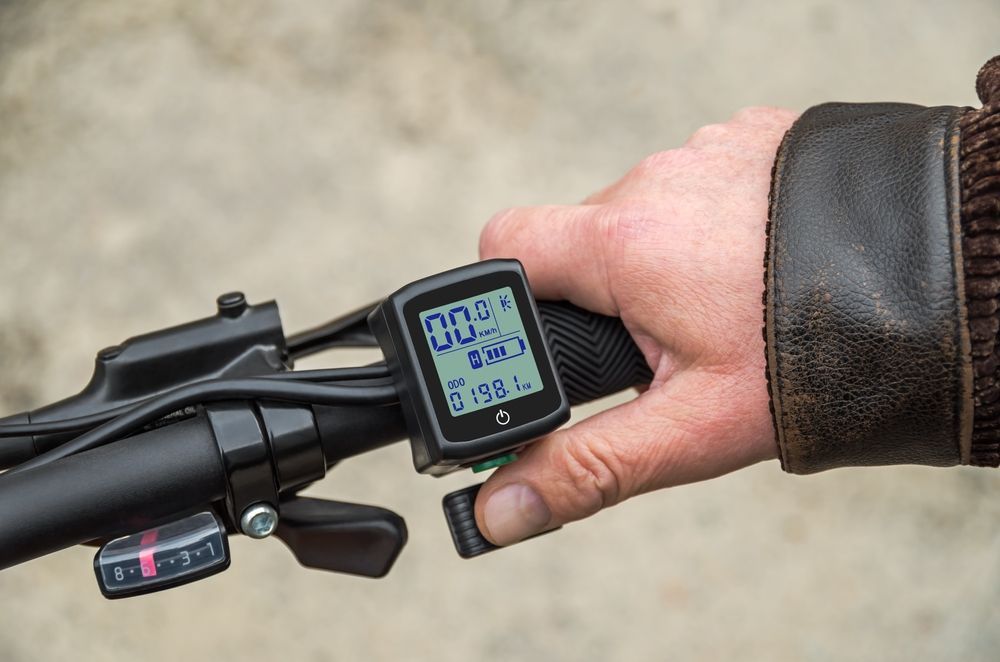
E-bikes blend traditional cycling with a boost from electric motors, making rides smoother and less tiring:
How Does an Electric Bike Work: An e-bike integrates a conventional bicycle setup with an electric motor, powered by a rechargeable battery. This setup enhances your pedal power, with some models allowing for motor-only propulsion.
Regulating Motor Power: An onboard controller manages motor power, adjusting the assistance based on pedaling force and bike speed. This ensures optimal power delivery for a comfortable ride.
Motor Types and Characteristics:
Hub Motors: Located in the wheel's hub, these motors propel the bike forward by turning the rear wheel.
Mid-Drive Motors: Located at the bike's crank, these motors offer a balanced ride by driving the bike’s chain. They excel in hilly terrains by utilizing the bike's existing gears.
Range and Speed:
Range: Typically, e-bikes can cover 25 to 70 miles per charge, influenced by factors such as battery size, motor efficiency, terrain, and rider weight.
Speed: Speed varies based on the motor and settings, with some e-bikes reaching up to 28 mph.
Multiple-Mode Electric Bicycles: These advanced e-bikes can switch between different class modes depending on how much power you need (Class 1, 2, and 3), allowing riders to adapt the motor's assistance level to fit specific regulations or riding preferences. This versatility ensures compliance with local laws while catering to various riding conditions.
These innovations highlight the adaptability of e-bikes, making them suitable for everything from leisurely rides to commuting and off-road adventures.
Types of E-bikes Explained
Explore the dynamic world of e-bikes, designed for diverse lifestyles and environments. Whether for commuting, exploring, or daily tasks, each model offers specialized features to enhance your cycling experience. Let's discover how these innovative bikes can transform your travel.
Commuter/ City E-bikes (Class 1)
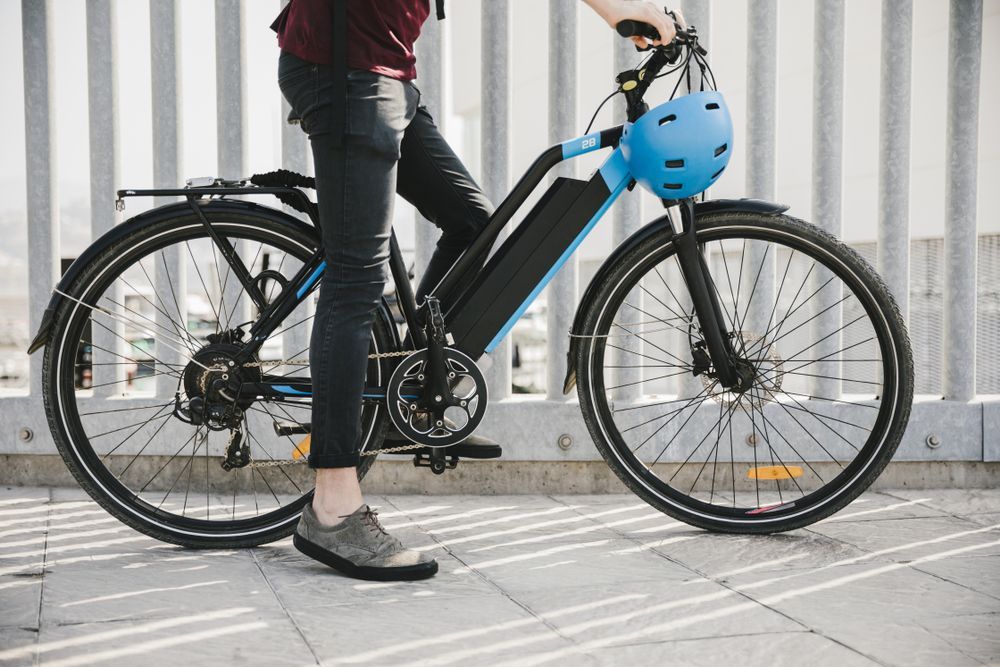
Designed for urban environments, city e-bikes are sleek and stylish, making daily commutes more enjoyable. With features like padded seats and smooth gears, they are perfect for navigating through traffic assisting up to 20MPH, and squeezing into tight parking spots.
Pros: Efficient for urban travel, lightweight, and stylish.
Cons: Limited off-road capability.
Maintenance Tip: Regularly check tire pressure and brakes due to frequent stops.
Cost Range: $1,000 to $3,000, with basic maintenance costs around $50-$200 annually.
Mountain E-bikes (Class 3)
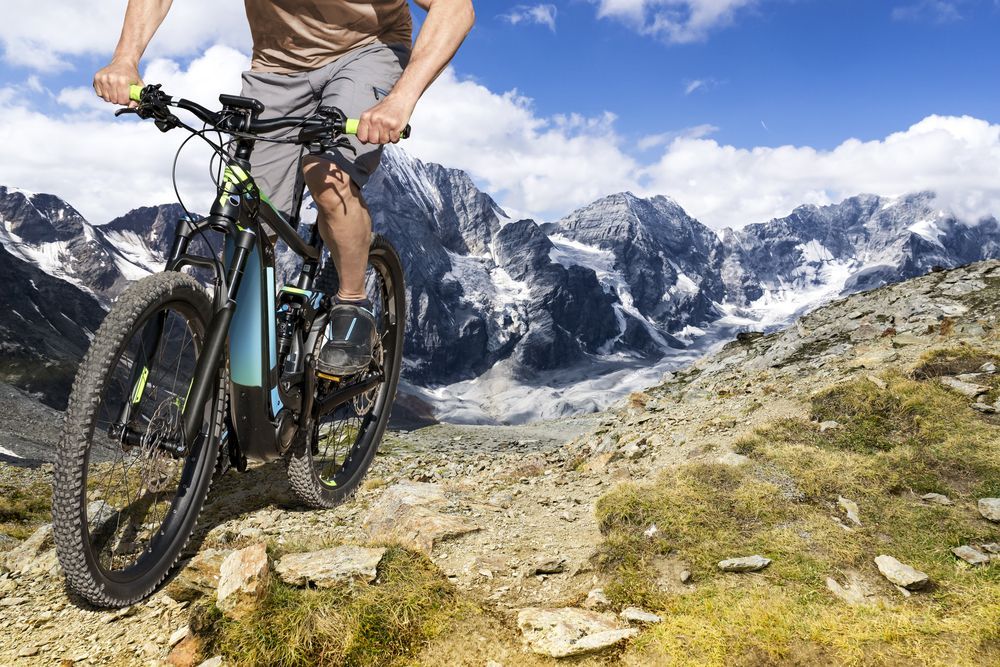
Built for adventure, an electric mountain bike comes with robust frames and advanced suspension systems that handle rough terrain with ease. They amplify your pedaling power, providing the thrill of e mountain bikes without exhaustion. Depending on the model, they offer pedal assist up to 28 MPH.
Pros: Great for rugged terrain, enhances climbing ease.
Cons: Heavier and more expensive due to advanced features.
Maintenance Tip: Clean and inspect the suspension and gears after off-road use.
Cost Range: $2,000 to over $10,000, depending on the technology and brand.
Cargo E-bikes (Class 1 or 2)
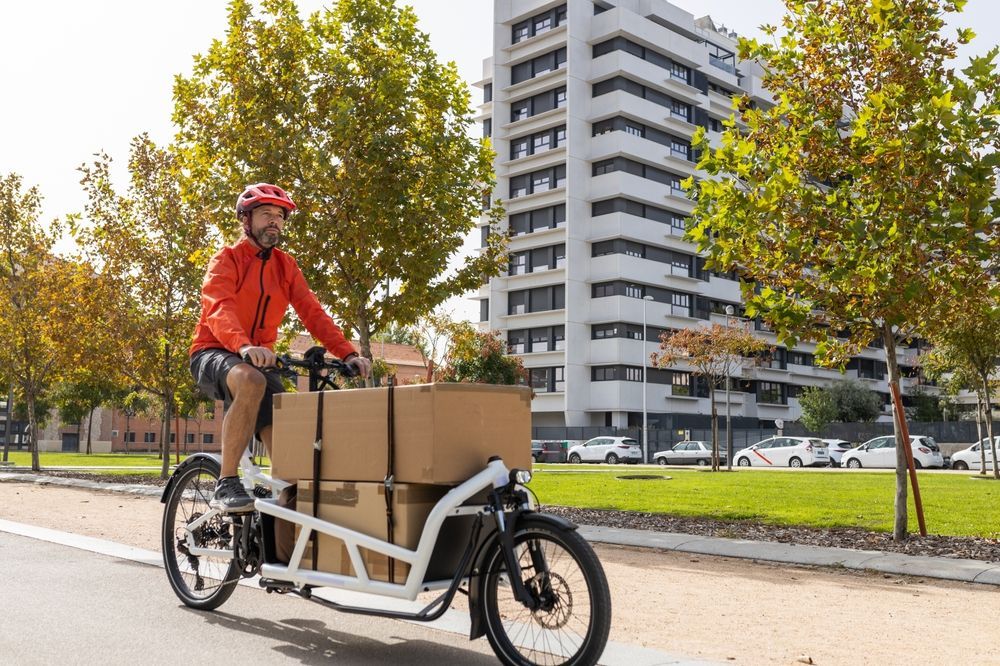
Ideal for multitaskers and busy parents, cargo e-bikes feature reinforced frames and expanded storage areas. They are capable of hauling everything from groceries to children, providing pedal assist of up to 20 MPH. Cargo e-bikes are a practical choice for family outings or utility trips.
Pros: Excellent for carrying heavy loads, stable design.
Cons: Bulkier and slower on busy streets.
Maintenance Tip: Regularly check the integrity of racks and attachments.
Cost Range: $1,500 to $5,000, with higher maintenance costs for wear and tear on tires and brakes.
Folding E-bikes (Class 1 or 2)
The epitome of convenience, folding e-bikes are perfect for those with limited storage space or commuters who use multiple modes of transport. They can be easily folded down to a compact size, making them portable enough to carry on public transportation or store under a desk at work. Falling under Class 1 or Class 2, they offer pedal assist of up to 20 MPH.
Pros: Extremely portable, easy to store.
Cons: Often less durable and have smaller wheels.
Maintenance Tip: Frequently inspect the folding mechanism and hinges for wear.
Cost Range: $1,000 to $3,500, with considerations for compact parts that may wear out quicker.
Gravel E-bikes (Class 1 or 3)

Gravel e-bikes are designed for versatility, excelling on both paved roads and unpaved trails assisting with up to 28MPH. With wider tires and sturdy frames, they offer stability and comfort over rough terrain, making them ideal for adventurous riders seeking exploration beyond city streets.
Pros: Versatile for mixed terrains, robust construction.
Cons: Can be expensive, and heavier than standard road bikes.
Maintenance Tip: Check tire tread and pressure regularly to handle varied surfaces.
Cost Range: $2,500 to $6,000, maintenance similar to mountain bikes due to similar use.
To appreciate the versatility and performance of the various e-bike models, consider scheduling a test ride. This hands-on experience will let you feel the ease and efficiency that the appropriate e-bike can bring to your daily commute or leisure activities.
Charging E-bike Batteries
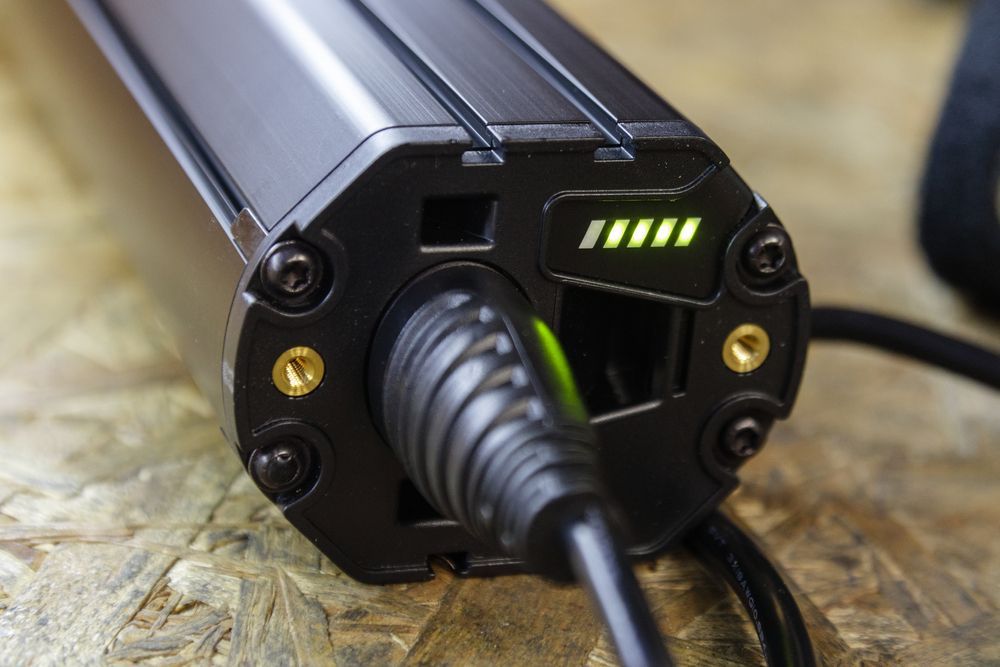
Modern e-bikes use advanced lithium-ion batteries, which are lighter, more efficient, and last longer than older battery types like nickel-cadmium or lead-acid. These batteries have a low self-discharge rate and a high power-to-weight ratio, making them well-suited for e-biking.
Battery and Range: The battery is crucial for how far an e-bike can travel on a single charge. Here are some essential tips:
Average Lifespan: Most e-bike batteries will last between 500 to 1,000 charge cycles before significant degradation occurs. Proper care can extend their lifespan.
Range Per Charge: Typically, e-bikes can travel anywhere from 25 to 70 miles on a single charge, depending on the battery capacity, which usually ranges from 250Wh to 700Wh.
Factors Affecting Battery Life:
Riding Conditions: Steep terrains and colder climates require more battery power and thus drain the battery faster.
Battery Care: Regular charging and avoiding complete discharges can help maintain battery health.
Weight and Load: Heavier riders or additional cargo can affect the riding range of your e-bike.
Innovations in Charging Devices The charging technology for e-bikes is constantly evolving, with newer innovations aimed at reducing charging time and increasing convenience. Some of the latest developments include:
Fast Chargers: These allow riders to charge their lithium batteries up to 50% faster than standard chargers, making it easier to get back on the road quickly.
Solar Chargers: For the eco-conscious rider, solar chargers provide a power output to charge e-bike batteries using renewable energy, ideal for long-distance tours.
Integrated Charging Systems: Some newer models feature integrated charging systems that allow the battery to recharge while pedaling, although this is typically minimal and depends heavily on the riding conditions.
Charging Your E-Bike Battery: Quick Guide
Locate the Charging Port: Find where to plug in the charger on your e-bike.
Power Off Your E-Bike: Make sure your e-bike is turned off to prevent any safety issues.
Connect the Charger: Plug the charger into a power outlet and connect it to your e-bike.
Monitor the Charging: Keep an eye on the charger's indicator lights to track progress.
Allow Full Charge: Let the battery charge fully until the lights signal that it's done.
Disconnect and Store: Unplug the charger and store it away safely once charging is complete.
Power On Your E-Bike: Turn on your e-bike and check that the battery is charged and ready to go.
Following these steps ensures a smooth and safe charging process for your e-bike battery, maximizing its lifespan and optimizing its performance for your rides.
Where You Can Ride an E-bike
Streets: E-bikes are generally permitted on streets, offering riders a convenient and efficient mode of transportation. However, sharing the road with other vehicles can pose safety risks, especially in areas with heavy traffic or high speeds.
Sidewalks: Some regions allow e-bikes on sidewalks, providing an alternative route for riders seeking a safer or more leisurely experience. However, sidewalk riding can increase the risk of collisions with pedestrians and obstacles, posing a danger to both riders and walkers.
Multi-use Trails: Many multi-use trails welcome e-bikes, offering riders scenic routes for recreational and fitness activities. However, conflicts may arise between e-bike users and traditional cyclists or pedestrians, particularly on narrow or crowded paths.
Mountain Bike Trails: E-bike access to mountain bike trails varies widely, with some trails permitting their use and others prohibiting it. While e-bikes can enhance accessibility and enjoyment for riders of all skill levels, their presence may raise concerns about trail erosion and conflicts with non-motorized users.
Legal Considerations: Riding E-bikes on the Street
General legality and local nuances: E-bike street laws vary by region, with some areas imposing restrictions or requirements for e-bike riders. Understanding local regulations is essential to ensure compliance and safety.
E-bike street laws by state: E-bike laws vary by state in the US, with each state having its own regulations governing where and how e-bikes can be ridden. Here is a general overview of some common e-bike laws by state:
California: California has three classes of e-bikes, with Class 1 and 2 allowed on bike paths and lanes unless otherwise restricted by local jurisdictions.
New York: New York allows Class 1 and 2 e-bikes on bike lanes and paths, with Class 3 e-bikes permitted on roadways with a speed limit of 30 mph or less.
Texas: Texas defines e-bikes as bicycles, allowing them on bike paths and lanes unless prohibited by local ordinances.
Florida: Florida treats e-bikes as bicycles, allowing them on bike paths and lanes, as well as roadways, unless otherwise restricted by local jurisdictions.
Colorado: Colorado follows the three-class system, allowing Class 1 and 2 e-bikes on bike paths and lanes, with Class 3 e-bikes permitted on roadways and bike paths unless otherwise restricted.
Washington: Washington allows Class 1 and 2 e-bikes on bike paths and lanes unless prohibited by local jurisdictions, while Class 3 e-bikes are restricted to roadways.
Oregon: Oregon permits Class 1 and 2 e-bikes on bike paths and lanes, with Class 3 e-bikes allowed on roadways with a speed limit of 25 mph or less.
These are just a few examples, and it's essential to check the specific laws and regulations in your state or local area for accurate information regarding e-bike usage. Additionally, e-bike laws may change over time, so it's crucial to stay informed about any updates or revisions to the regulations in your area.
Age Restrictions for E-bike Usage
Many states have minimum age requirements for operating e-bikes, aiming to ensure rider safety and competence. Parents and guardians should familiarize themselves with these regulations and provide appropriate supervision and safety gear for minors.
Arizona: Riders must be at least 16 years old, and all riders under 18 are required to wear helmets.
California: Class 1 and 2 e-bikes can be ridden by anyone 16 or older, while Class 3 e-bikes are restricted to riders who are 18 years or older. Helmet use is mandatory for riders under 18.
Colorado: Class 3 e-bike riders must be at least 16 years old, and those under 18 must wear helmets.
New York: While generally adhering to the 3-tier class system, the state has specific rules that may vary, especially in cities with populations over one million. It's best to check local regulations for any additional age and helmet requirements.
Alaska: There is a minimum age requirement of 14 years for using electric bikes, and helmets are not mandatory.
Hawaii: Riders aged 15 and older are allowed to ride, provided the e-bike is registered to a household member. Riders under 16 are required to wear helmets.
It's important to note that regulations can change, and local rules may also apply, especially concerning where e-bikes can be used (such as on sidewalks or specific trails). Always check the most current local laws to ensure compliance and safety.
Educational Programs for Young Riders
Educational initiatives for young riders can promote safe and responsible e-bike use, teaching essential skills and knowledge for navigating streets and trails. Several programs across the US aim to educate young e-bike riders on safety and responsible riding:
E-Bike Smart: Developed by PeopleForBikes and the League of American Bicyclists, this program offers comprehensive safety education for riders of all ages, focusing on topics like battery care, helmet fitting, and road etiquette.
Smart Cycling Classes: Offered by the League of American Bicyclists, these classes provide online and in-person training for both new and experienced riders, teaching essential cycling skills and safety practices.
PedalPower Kids: This program provides tailored bike safety events and educational opportunities for children, including lessons, clubs, and summer camps that teach road safety and bike handling skills.
Bike New York: Runs extensive free bicycle education programs suitable for all ages, featuring classes and resources to help riders learn and practice safe cycling.
These initiatives help young riders gain the skills and knowledge needed to safely enjoy e-biking.
Advantages and Disadvantages of E-bikes
E-bikes offer numerous benefits and come with certain challenges. Let’s explore the key advantages and disadvantages to better understand their impact on users and the environment.
Advantages of E-bikes
Environmental Benefits: Reduces emissions and energy use, offering an eco-friendly option for short to medium commutes.
Health and Mobility: Provides physical exercise and accessibility for those with physical limitations through pedal-assist.
Increased Cycling Participation: Attracts more riders by lowering physical barriers, thus boosting cycling rates.
Urban Mobility: Enhances urban transport systems by solving the "last mile" problem and complementing public transport.
Role in Public Transportation: Integrated into city plans through shared programs, improving access to various modes.
Disadvantages of E-bikes
Cost Factors: High initial costs and significant long-term maintenance expenses.
Environmental Impact of Batteries: Battery production and disposal pose environmental challenges like resource depletion.
Increased Speed Risks: Higher speeds may lead to more accidents and injuries.
Safety Concerns: Greater speed and weight require heightened vigilance and appropriate safety gear.
Regulatory Challenges: Inconsistent regulations can create confusion and safety issues across regions.
As e-bikes continue to evolve, understanding their impact on society and individual lives becomes more crucial. Balancing the benefits and challenges will help ensure that e-bikes contribute positively to urban mobility and environmental sustainability.
Arguments Against E-bikes
E-bikes stir a lively debate among various groups, each with strong opinions:
Traditional Cyclists: Many purists believe e-bikes dilute the essence of cycling, making it less about physical endurance and more about convenience. They argue that the very challenge of cycling is what makes it rewarding.
Pedestrians: Walking in urban spaces alongside e-bikes can be unnerving. Many pedestrians express concerns over their safety, worried about the increased risks of accidents due to faster-moving e-bikes on sidewalks.
Environmentalists: While e-bikes are celebrated for their green credentials, some environmental advocates point out the darker side of their production. The manufacturing and disposal of batteries, particularly those containing lithium, pose serious environmental threats through resource depletion and pollution.
Trail Advocates: Nature lovers and trail maintainers often oppose e-bike access on natural trails. Their concerns center around potential trail damage, disruptions to wildlife, and conflicts arising from mixing traditional bikes with faster, motor-assisted ones.
Despite the criticisms, there are compelling arguments and solutions that support the adoption of e-bikes:
Promoting Inclusivity: E-bikes break down barriers to cycling, opening up the joy of biking to those who might otherwise find it physically daunting. They democratize access to cycling, promoting inclusivity across age and ability levels.
Environmental Upside: Although not without their faults, e-bikes generally offer a cleaner alternative to cars. By reducing reliance on fossil fuels, they help decrease urban air pollution and lower the overall carbon footprint of commuting.
Regulatory Frameworks: Crafting thoughtful regulations can alleviate many concerns associated with e-bikes. By implementing speed limits, designating specific zones for e-bike use, and enforcing proper usage, cities can ensure the safer coexistence of e-bikes with other road and path users.
Communities Wanting to Ban E-bikes:
Instead of outright bans, thoughtful approaches like designated lanes for e-bikes and educational campaigns can effectively manage the integration of e-bikes into urban landscapes. These strategies not only address safety and congestion concerns but also foster a more inclusive cycling culture.
Major Safety Issues Due to Lack of Regulations:
Lack of consistent regulations often leads to confusion and unsafe situations. Establishing and enforcing clear guidelines is crucial for ensuring the safety of all road users and fostering a positive environment for the growth of e-bike usage.
This version aims to present the diverse viewpoints more vividly while suggesting proactive solutions to address the concerns raised by different stakeholders.
Why Do So Many Traditional Cyclists Hate e-bikes?
Many traditional cyclists have reservations about e-bikes for several reasons, ranging from issues of fairness in competitive scenarios to concerns about safety and trail etiquette:
Cheating in Competitions: Some traditional cyclists view the use of e-bikes in competitions as unfair. E-bikes can provide mechanical assistance, which might give riders an undue advantage in races originally designed to test human endurance and skill.
Strava Segment Cheaters: Strava and other cycling apps allow riders to record their ride data and compare performance. E-bikes can skew these comparisons because they can help riders achieve times that would be unattainable on a traditional bike due to the motor assistance, leading to frustrations among those who compete using their own power.
Dangerous Speed: E-bikes can reach higher speeds more easily compared to traditional bikes. This increased speed can be seen as dangerous, particularly on shared trails and roads where high speeds can increase the risk of accidents.
Bike Trail Nuisance: Some traditional cyclists believe that motorized bikes, including e-bikes, should not be allowed on trails designated for non-motorized vehicles. The presence of motorized vehicles can change the nature of these trails and potentially lead to conflicts with non-motorized trail users.
Novice Inexperienced Riders: E-bikes are often more accessible to beginners who might not be experienced with cycling etiquette or handling higher speeds. This can lead to unpredictable behavior, which traditional cyclists may find dangerous or annoying.
Economic Impact on the Bicycle Industry: There are concerns that the rising popularity of e-bikes could shift market dynamics in the cycling industry, potentially affecting businesses that have traditionally focused on non-motorized bicycles.
These factors contribute to a complex relationship between traditional cyclists and the emerging e-bike trend. As e-bikes become more prevalent, ongoing dialogue and adjustments in regulations and community norms will be essential to address these concerns.
E-Bike Laws and Regulations
Navigating e-bike laws can be complex, with variations from federal to state levels. Federally, e-bikes are classified as "low-speed electric bicycles," requiring operable pedals, a motor under 750 watts, and a top speed of 20 mph when motor-powered.
State and Local Variations:
State-Specific Rules: Some states adjust these federal guidelines to better suit local needs, including where e-bikes may be ridden, like on bike paths or roads, without the need for registration.
Helmet Laws: Many states enforce helmet usage, particularly for minors, to promote safety on the roads.
Local Ordinances: Be sure to check any local regulations that might add further restrictions, especially in urban centers or environmentally sensitive areas.
It's essential to keep up-to-date with the regulations in your area to ensure both safe and legal e-bike use.
Safety Issues: Addressing E-bike Risks
Accidents
Statistics: Significant increases in e-bike accidents have been reported, with the Consumer Product Safety Commission documenting a rise in micromobility injuries and 233 deaths from 2017 to 2022.
Common Causes and Prevention: Major accidents often involve collisions with vehicles or issues with rider control. Safety measures like wearing helmets, proper bike maintenance, visibility, and cautious riding are crucial.
Safety Issues: Batteries
Risks: Lithium-ion batteries, common in e-bikes, present serious fire hazards if overcharged or damaged.
Best Practices for Battery Safety: Ensuring the use of correct chargers, monitoring charging processes, and proper disposal are vital to prevent accidents.
NYC Battery Incidents: New York City has experienced multiple incidents of battery-related fires and explosions, highlighting the critical need for strict adherence to safety protocols.
These summaries underscore the importance of following safety guidelines to minimize risks associated with e-bike usage.
E-bike Injuries and Fatalities: A Statistical Analysis
Recent statistics indicate a sharp increase in e-bike-related injuries and fatalities as their popularity grows. From 2017 to 2022, emergency departments reported a significant rise in injuries associated with micromobility devices like e-bikes, with nearly half of all estimated e-bike injuries occurring in the last recorded year.
There were also 233 deaths associated with these devices during this period. Such data highlight the escalating safety challenges as more people opt for this form of transportation.
The rising trend in e-bike injuries and fatalities calls for urgent action in terms of policy and safety practices:
Policy Development: There's a need for more robust regulations concerning e-bike manufacturing, particularly with battery safety standards to address the fire hazards associated with lithium-ion batteries. Enhanced laws could also regulate the use and speed of e-bikes in public spaces to prevent accidents.
Safety Education: Increasing public awareness about the proper use of e-bikes and their associated risks is crucial. Offering safety courses and including e-bike safety in public health campaigns could reduce accidents.
Infrastructure Improvements: Cities might need to adjust their infrastructure to better accommodate e-bikes, potentially creating safer, separate lanes for different types of micromobility devices.
Emergency Response: Improved training for first responders on handling e-bike-related injuries and fires could enhance outcomes for victims.
These measures could help mitigate risks and enhance the safety of e-bike users, potentially reducing the incidence of injuries and fatalities linked to these increasingly popular vehicles.
The Future of E-bikes and Regulatory Needs
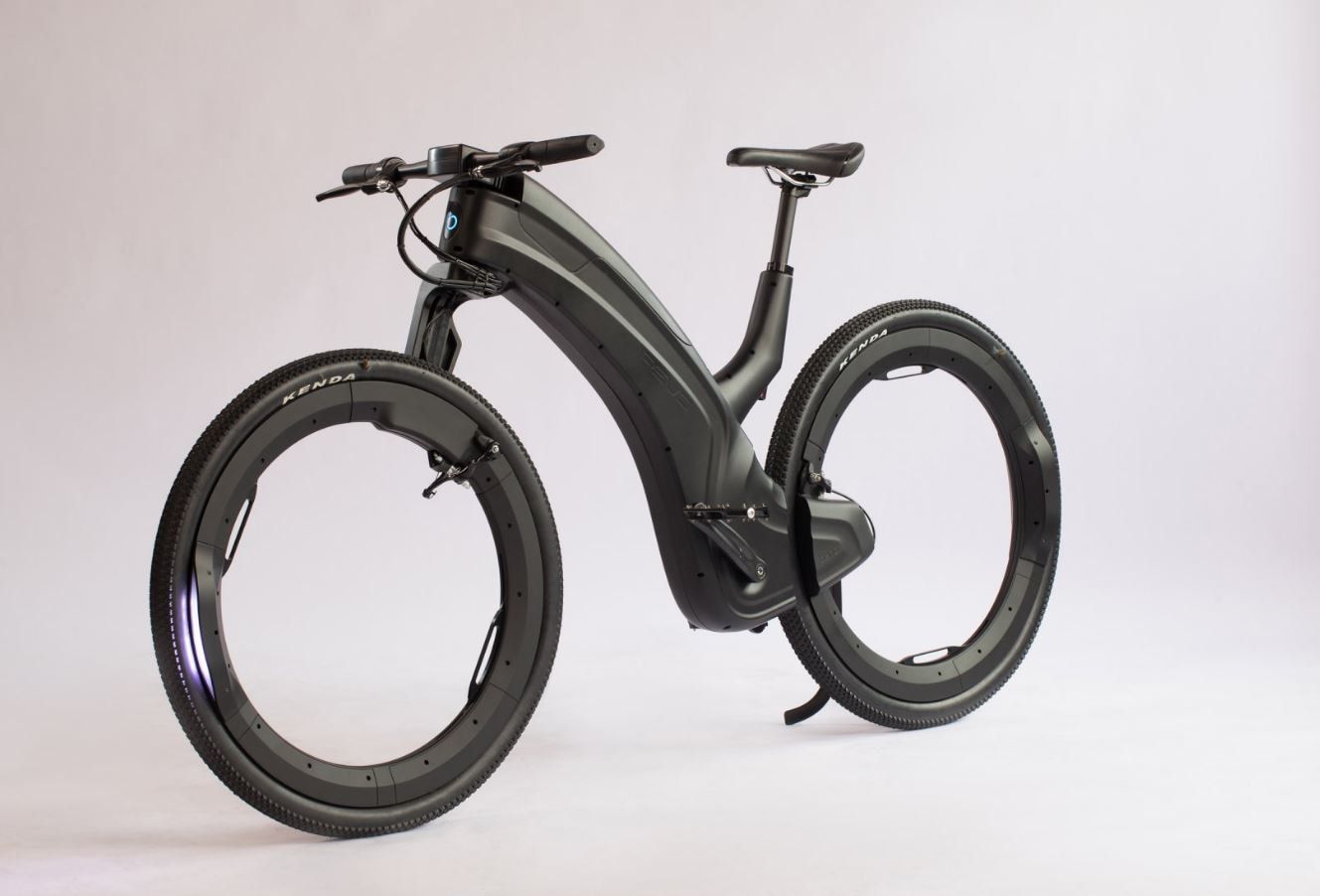
As e-bikes become more integrated into urban landscapes, their regulatory needs evolve:
International Perspectives: Countries like the Netherlands and Germany offer models for how to integrate e-bikes into public transport systems effectively and safely.
Trends and Forecasts: Advances in technology and increasing environmental awareness are likely to propel e-bike popularity even further.
Stricter Regulations: The growing number of e-bike riders may lead to stricter safety regulations and more comprehensive infrastructure planning to accommodate them.
Case Study: California's E-bike Challenges
State-specific Challenges: California faces challenges such as integrating e-bikes into traffic and developing infrastructure suitable for both e-bikes and traditional bicycles, especially in urban areas.
Community-Specific Challenges: Urban areas in California are working on accommodating e-bikes alongside vehicles, while rural areas may lack the necessary e-bike infrastructure.
Legislative Responses: California has enacted several laws to improve e-bike safety and integration:
E-Bike Path Access: Legislation has been passed to allow Class 3 e-bikes on more public paths and bikeways.
Safe E-Bike Storage: New laws mandate safe e-bike storage in rental properties to mitigate fire risks from batteries.
Incentive Programs: The state offers a rebate program to make e-bikes more accessible, promoting cleaner transportation.
E-Bike Ban?
There is no move to ban e-bikes in California. Recent legislation supports the integration and safe use of e-bikes as part of the state's green transportation initiatives.
These legislative measures highlight California's approach to safely and sustainably incorporating e-bikes into its broader transportation and environmental strategy.
Ride Smart with Bike Legal
As we coast to a stop on our journey through the electrifying world of e-bikes, it's clear that they're more than just a trend; they're a sustainable, health-promoting, and practical solution for modern transportation challenges. Here's a quick recap of the key points we've covered:
E-bikes are environmentally friendly and reduce reliance on fossil fuels.
They offer health benefits similar to regular bicycles but with less physical strain.
Regulatory landscapes vary, highlighting the importance of understanding local e-bike laws.
While offering numerous advantages, e-bikes also present challenges such as higher costs and safety concerns.
Navigating the world of e-bikes can be as complex as a busy city intersection. If your e-bike adventure takes an unexpected turn, Bike Legal is here to help.
Specializing in bicycle law, we provide expert legal services that keep your ride smooth and your rights protected, ensuring you can enjoy the benefits of e-biking with peace of mind. Whether you're dealing with an accident or just need advice on navigating e-bike regulations, Bike Legal is your trusted partner on every path.
FAQs
Is a driver's license required to ride an e-bike? No, a driver's license is not required to ride an e-bike as they are treated similarly to bicycles under the law.
What are the three types of e-bikes? Class 1 e-bikes provide pedal assistance up to 20 mph, Class 2 e-bikes offer throttle assistance up to the same speed, and Class 3 e-bikes offer pedal assistance up to 28 mph and typically include a speedometer.
What is the difference between an e-bike and an electric bike? There is no difference between an e-bike and an electric bike; both terms describe bicycles that incorporate an electric motor to assist with pedaling.
Do you still have to pedal an electric bike? For Class 1 and Class 3 electric bikes, pedaling is necessary to activate the motor, whereas Class 2 electric bikes can operate with a throttle, allowing for movement without pedaling.
